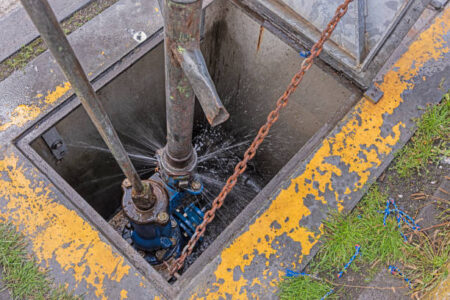Having trouble with puddles in your garden? Is your lawn more of a swamp than a sanctuary after it rains? You’re not alone. Garden drainage is a common issue many gardeners face, and it’s crucial for maintaining a healthy and beautiful garden. In this article, we’ll dive deep into everything you need to know about garden drainage, from identifying problems to implementing solutions.
What is Garden Drainage?
Garden drainage refers to the process of redirecting excess water away from your garden to prevent waterlogging and other related issues. Proper drainage ensures that water is adequately absorbed into the soil, preventing standing water that can damage plants and soil structure. Poor drainage can lead to numerous problems, including root rot, soil erosion, and even mosquito breeding grounds.
Why Garden Drainage Matters?
Good garden drainage is vital for several reasons. It helps maintain the health of your plants by ensuring they get the right amount of water without becoming waterlogged. It also prevents soil erosion, which can wash away nutrients and harm the structural integrity of your garden. On the flip side, poor drainage can lead to plant diseases, unattractive muddy patches, and a host of other issues.
Signs Your Garden Has Drainage Problems
Wondering if your garden has drainage issues? Look out for these telltale signs:
- Waterlogging: Puddles that remain long after it rains.
- Soil Erosion: Washed-out soil areas, particularly on slopes.
- Plant Health Issues: Yellowing leaves, stunted growth, and root rot.
Assessing Your Garden’s Drainage Needs
Before you can fix drainage problems, you need to understand the specifics of your garden’s drainage needs. Start by evaluating your soil type. Clay soils, for example, retain water longer than sandy soils. Identify any low spots where water tends to collect and observe the water flow patterns during and after a rainstorm.
Types of Garden Drainage Solutions
There are several ways to improve garden drainage, and the best solution often involves a combination of methods.
- Surface Drainage: Techniques like swales and ditches help redirect surface water away from your garden.
- Swales: Shallow, broad channels designed to slow and capture runoff, allowing it to soak into the soil.
- Ditches: Narrow channels that quickly divert water away from problem areas.
- Subsurface Drainage: These methods deal with water that accumulates below the surface.
- French Drains: Perforated pipes placed in trenches filled with gravel to channel water away.
- Perforated Pipes: Similar to French drains but can be used in various configurations.
Installing a French Drain
A French drain is a popular and effective way to address garden drainage issues. Here’s how you can install one:
- Materials Needed: Perforated pipe, gravel, landscape fabric, shovel, and a drainage outlet.
- Step-by-Step Guide:
- Dig a trench in the problem area.
- Line the trench with landscape fabric.
- Place the perforated pipe in the trench.
- Cover the pipe with gravel.
- Fold the fabric over the gravel.
- Fill the trench with soil.
Creating Swales and Ditches
Swales and ditches are excellent for managing surface water. Here’s what you need to do:
- Planning and Design: Determine the best location and design based on the natural flow of water in your garden.
- Construction Process: Dig the swale or ditch, ensuring a gentle slope for effective water movement.
Improving Soil Drainage
Improving your soil’s drainage can be as simple as adding amendments like compost, sand, or gypsum. Aeration techniques, such as using a garden fork to create holes in the soil, can also help water penetrate the soil more effectively.
Planting for Better Drainage
Choosing the right plants can make a big difference in managing garden drainage. Opt for plants that thrive in wet conditions, like willows or irises. Raised beds are another great option as they improve drainage by elevating plant roots above waterlogged soil.
Using Mulch and Ground Covers
Mulch and ground covers are not only aesthetically pleasing but also beneficial for drainage. They help absorb excess water and prevent soil erosion. Some of the best types to use include wood chips, straw, and shredded leaves.
Maintenance of Garden Drainage Systems
Regular maintenance is key to keeping your drainage systems functioning properly. Inspect your systems regularly, especially after heavy rains. Clear any debris from ditches, swales, and French drains, and make necessary repairs to avoid blockages.
DIY vs. Professional Help
While many drainage solutions can be DIY projects, some situations may require professional help. If you have extensive drainage problems or need to install complex systems, it’s best to consult a professional.
Cost Considerations
Budgeting for garden drainage solutions involves considering both initial costs and long-term savings. DIY projects like French drains can be cost-effective, but professional installations may offer more durable solutions. Investing in proper drainage now can save you money on future garden repairs and plant replacements.
Conclusion!!
Proper garden drainage is essential for a healthy, thriving garden. By assessing your garden’s needs, implementing suitable drainage solutions, and maintaining them regularly, you can prevent common issues like waterlogging and soil erosion. Take the time to address your garden’s drainage, and you’ll be rewarded with a beautiful and resilient outdoor space.
FAQs
- How do I know if my garden needs drainage?
- Look for signs like standing water, soil erosion, and unhealthy plants. If water takes too long to drain after rain, it’s time to consider drainage solutions.
- What is the best type of drainage system for clay soil?
- French drains are highly effective for clay soils as they help redirect water away from the surface, preventing waterlogging.
- Can I install a drainage system myself?
- Yes, many drainage systems like French drains and swales can be DIY projects with the right tools and guidance.
- How often should I maintain my garden’s drainage system?
- Regular inspections, especially after heavy rains, are essential. Clean and repair your systems as needed to ensure they function correctly.
- What are some plants that help with garden drainage?
- Plants like willows, irises, and cattails thrive in wet conditions and can help absorb excess water in your garden.


